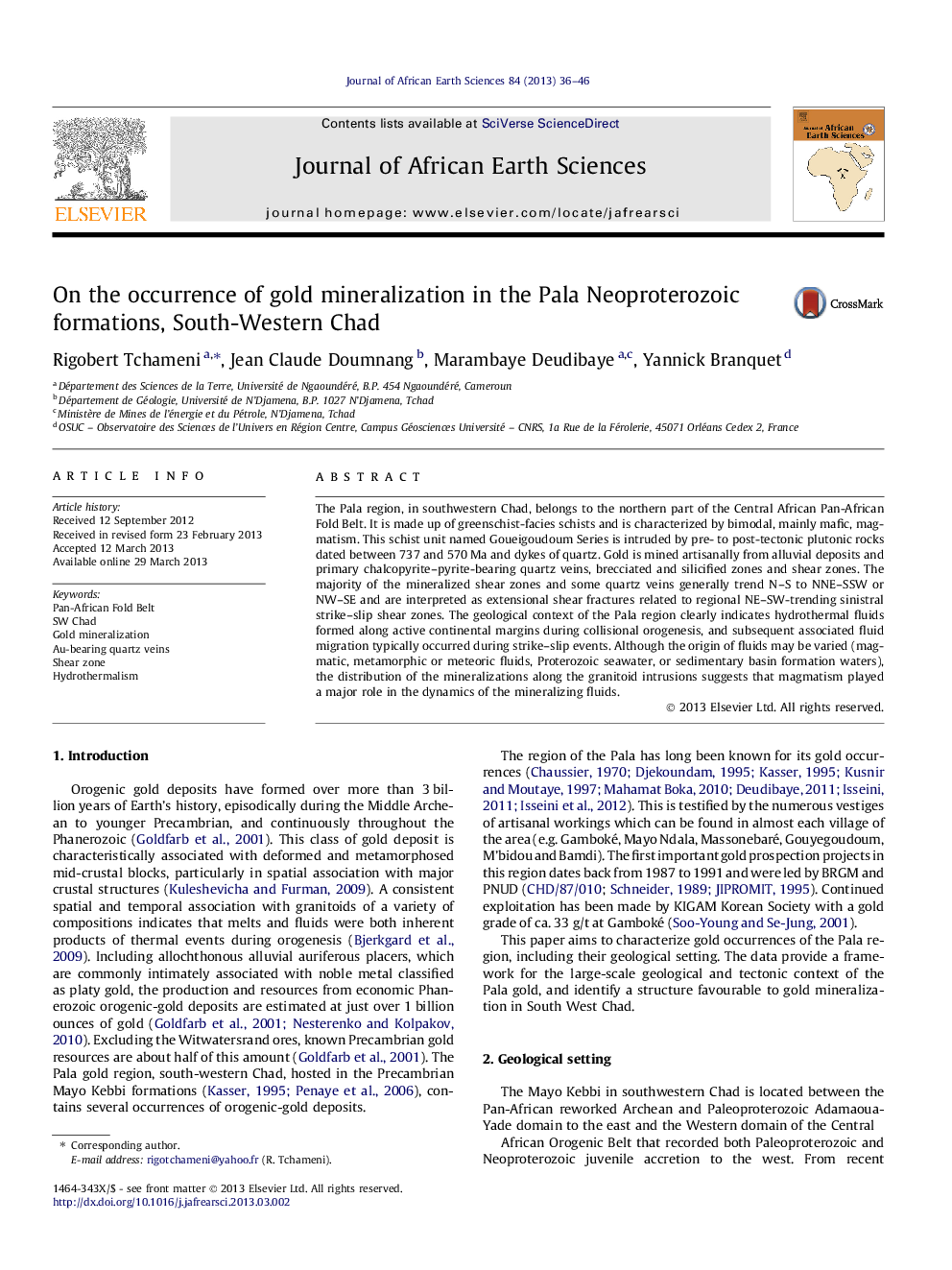| Article ID | Journal | Published Year | Pages | File Type |
|---|---|---|---|---|
| 4728922 | Journal of African Earth Sciences | 2013 | 11 Pages |
•In Pala region, the gold mineralization was formed during several stages.•Primary gold deposits consist of shear zone, brecciated and silicified zones.•The quartz veins generally trend N–S to NNE–SSW or NW–SE.•Quartz veins are interpreted as extensional shear fractures related to regional faults.
The Pala region, in southwestern Chad, belongs to the northern part of the Central African Pan-African Fold Belt. It is made up of greenschist-facies schists and is characterized by bimodal, mainly mafic, magmatism. This schist unit named Goueigoudoum Series is intruded by pre- to post-tectonic plutonic rocks dated between 737 and 570 Ma and dykes of quartz. Gold is mined artisanally from alluvial deposits and primary chalcopyrite–pyrite-bearing quartz veins, brecciated and silicified zones and shear zones. The majority of the mineralized shear zones and some quartz veins generally trend N–S to NNE–SSW or NW–SE and are interpreted as extensional shear fractures related to regional NE–SW-trending sinistral strike–slip shear zones. The geological context of the Pala region clearly indicates hydrothermal fluids formed along active continental margins during collisional orogenesis, and subsequent associated fluid migration typically occurred during strike–slip events. Although the origin of fluids may be varied (magmatic, metamorphic or meteoric fluids, Proterozoic seawater, or sedimentary basin formation waters), the distribution of the mineralizations along the granitoid intrusions suggests that magmatism played a major role in the dynamics of the mineralizing fluids.
Graphical abstractThe number of gold camps in the Pala region is hard to determine exactly; the most important mining localities include Gamboké, Mbidou, Massonebaré, and Goueigoudoum, in the North of Pala. There are two types of occurrences in these localities: the alluvial gold and the primary native gold related to shear zone and quartz veins.Figure optionsDownload full-size imageDownload as PowerPoint slide
